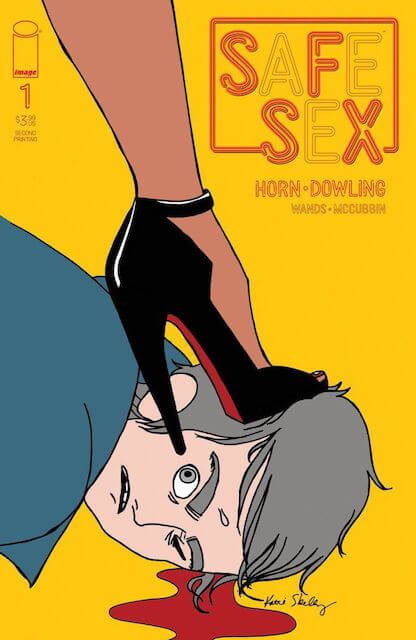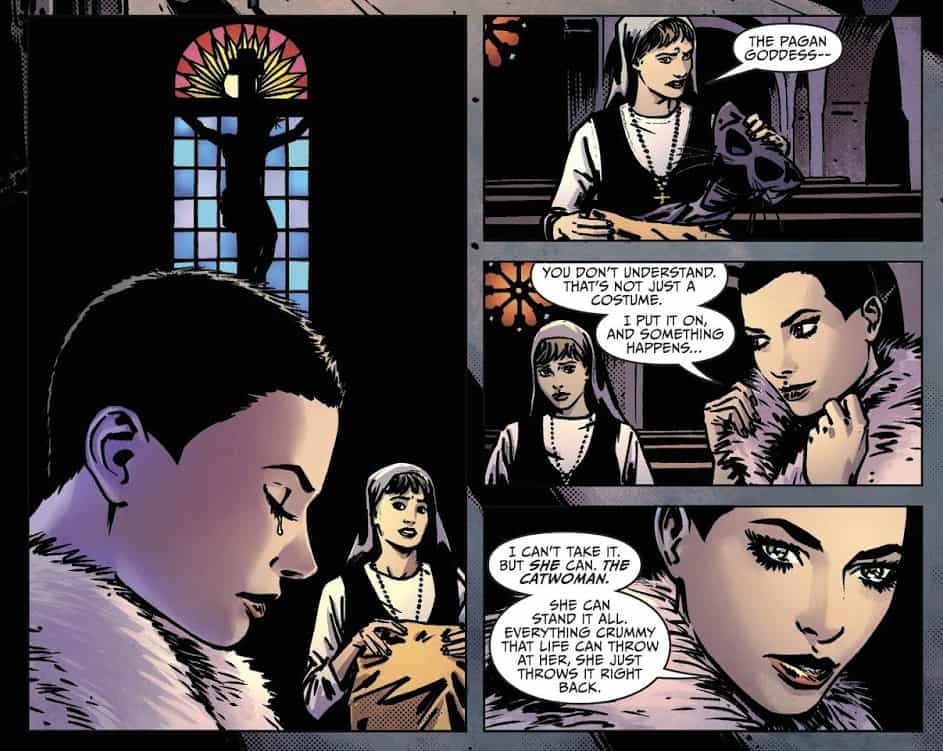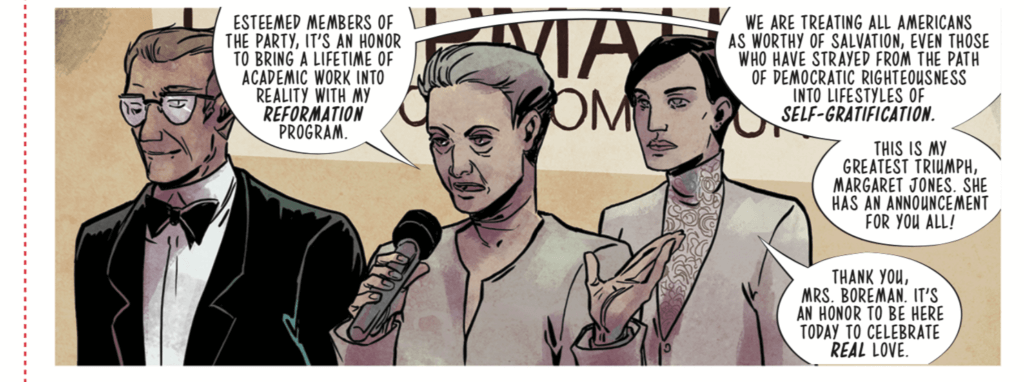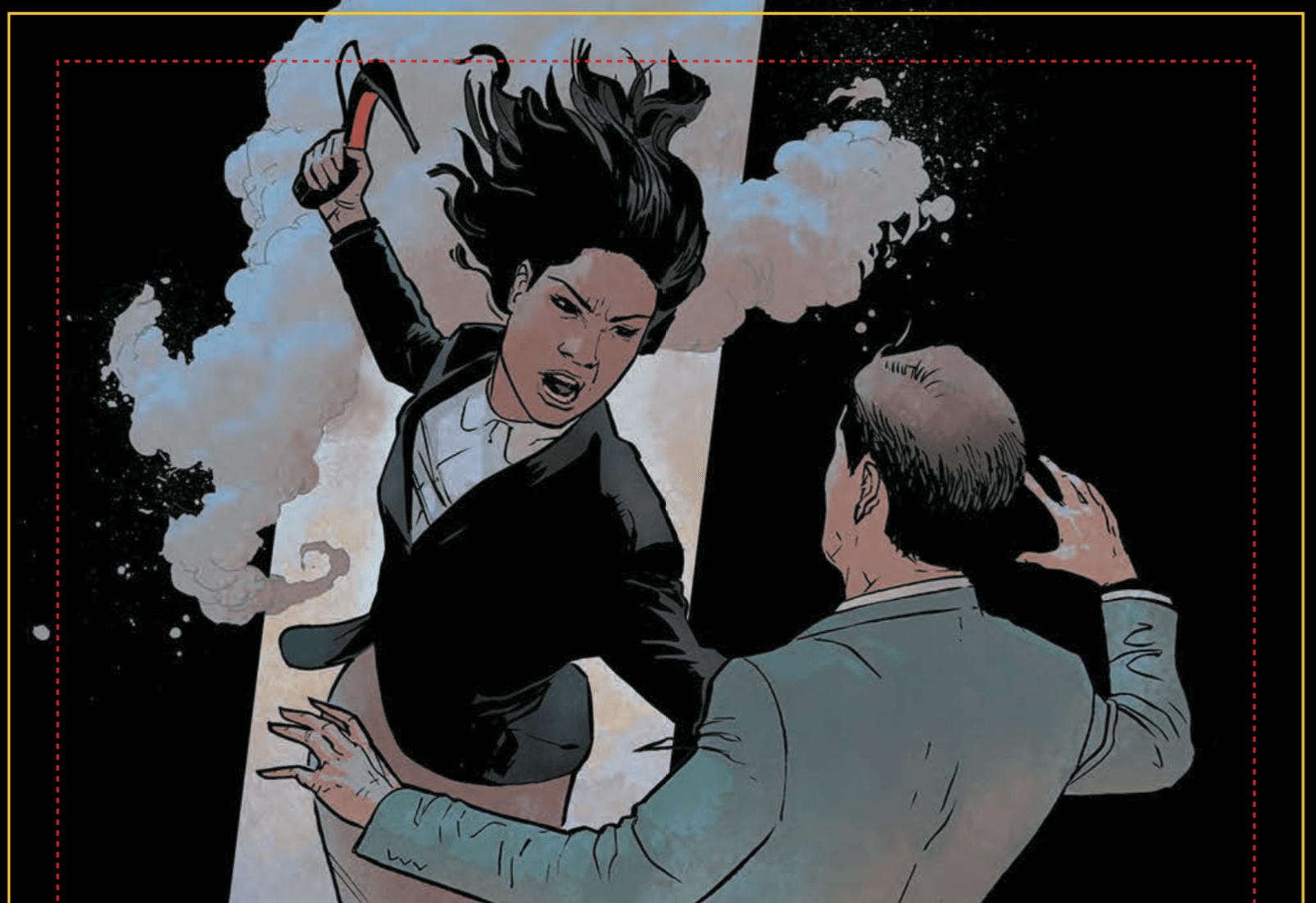When I sat down to have this interview with Tina Horn, it immediately felt like just a free-flowing conversation. Tina was calling in from her new apartment in LA and we got to talk about the different communities that we’re both a part of right now in pandemic times, and the struggles of trying to work when you can’t leave your house. Tina is a good friend of mine and her powerful personality really shows in the emotional energy we see from the first volume of her comic SfSx, or Safe Sex.

Thanks for taking time out for this, I really appreciate it. Can you give me a run-through of the history of Safe Sex and what it took for it to eventually get published by Image?
It’s my pleasure! So, in the summer of 2017, an editor at Vertigo Comics had listened to my podcast, Why Are People Into That?, and had asked if I was interested in writing a comic. And that was really cool because I have loved comic books my whole life! And the podcast is about sexual politics and culture, not about comics or even like genre fiction or really like anything pop culture related. It was a cool leap to know that someone listened to my like, totally indie, raunchy intellectual, not to mention sex worker forward and queer centric sex podcast and then gave me an opportunity to write a comic.
Getting a crash course in how to write serialized fiction in the comics medium and working in the comics industry. I got to learn on the job as we were developing the story. Vertigo connected me to some of the artists that ended up working on the first volume, Protection.

As we talk, we get into how the first two issues of Safe Sex were written, finished and publicized for Vertigo/DC Comics, which you can still find press info for, although most of it is related to the eventual switch that happened from Vertigo to Image. As Tina puts it, this happened in early 2019, long before we knew that Vertigo was even shuttering or that this comic needed a new home in a first place. Had it not been for a great contract allowing her to keep the IP, the Safe Sex that we know now could have easily went under with the imprint.
I could speculate about why they didn’t want to publish it. It’s not like we’d made something that was misrepresented in the pitch, the book is exactly what we pitched. Any explanation that you could have about why DC wouldn’t want to put out a very political allegory about the way that fascists use sexuality to control people, and the communities are subcultures to resist that fascist control, namely queers, sex workers, leather perverts and sluts. I don’t know why they didn’t want to publish that or why they changed their minds, but they did.
What was your experience like working with Image compared to Vertigo? I can imagine it’s a lot different when you actually own the IP.
Being at Image was definitely different. You’re essentially a small business owner managing all of the artists with their contracts, their invoices on top of all the creative and the art direction and everything. Compared to DC where they give you the contract upfront saying you’re going to write these scripts and this amount of pages and all that was handled for us.
But then you have more control, like creative control over the book. And you know, being a freelancer, being a sex worker, like I’m kinda really used to being a one queer band and managing all that stuff. And then everybody at Image, from the people who work in production to publicity to direct market sales were so helpful and supportive.

And when you look at the sales for SfSx, it’s no secret that people absolutely LOVED this comic from the very start. Before issue #1 of Safe Sex even releases, the first print run of the comic sold twice as much as anyone expected and sells out, a brand new comic from someone new to writing comics with such an unsubtle political agenda. But when you can count on one hand the amount of comics that exist about sex workers actually written by sex workers, it makes a difference to see something so explicitly queer and linking queerness inextricably with sex work.
I’m thankful you were able to make the comic that you wanted with Safe Sex, especially considering that the sex worker representation we do get most of the time, especially in comics, is so often straight-washed and fits a certain narrative of victimhood.
Absolutely. What we usually see, I think that usually sex work is either treated as something that’s almost supernatural, in that a lot of people can’t even wrap their minds around what it would actually be like to do sex work or be a sex worker. And so, it tends to be like an allegory for some other story that somebody wants to tell about woman or about gender or romance, and most often about crime.
I just re-read this Catwoman story that’s collected in a graphic novel, “Her Sister’s Keeper.” I think it was a Frank Miller that first suggested that Selina Kyle was a prostitute, and “Her Sister’s Keeper” is a whole story arc from her point of view where she gets beaten up by her pimp. And she has like, relationships with other women, one of whom is like a younger prostitute. But the point is that it’s clearly using prostitution as just like an example of something that happens in a city that is overrun with crime. Which is like a very Batman Gotham universe idea, and the hero is almost always this white vigilante, who you know, is like a cop but worse because they’re not a cop and think that they know better than cops.
There’s an underlying narrative we get into here as we keep talking about the Catwoman story about the larger perceptions of who’s a bad guy in these stories and who’s redeemable based on how they fit into Eurocentric standards of beauty, which is a whole other topic that needs its own feature.
And so the idea of prostitution, very much like victim trafficking, has these narratives that they’re either good girls who have fallen on hard times that are in bad circumstances, or they’re just irredeemable bad sluts.

It feels like sex work can’t exist on its own, it has to be a vehicle for someone’s story, like in Catwoman’s case, it’s a means to have her transform into this character.
Exactly, it always has to be trauma. And sex work can be traumatic, absolutely, but it’s a cliche and it just doesn’t represent it all. Sex work can be traumatic and it can also be other things, like someone can be dealing with PTSD and that doesn’t define everything about who they are.
And this is why like, representation is important in terms of characters, it’s really great to have queer representation and sex worker representation but that only goes so far. We’re marginalized creators, characters are figments of my imagination, they don’t actually need to get paid. I need to get paid. I’m the sex worker who needs a sustainable form of income in a world that criminalizes the way that I’ve made my living since I was in my early twenties. Representation of creators is just as, if not more important, and we tend to do a better job at creating characters based on our real lived experiences and also circumventing the tropes that do more harm than good.

I feel like a lot of people are going to see what’s happening to the characters in Safe Sex and see it as fantastical, even though this is very much a reality for sex workers, for queer + trans folks, for black + brown folks, especially for folks who are all of the above. How much of what you wrote is based in sci-fi compared to writing from real world experience?
It’s just reality, I didn’t make any of it up. There’s a few flourishes thrown in, but I’ve done enough reporting to know how bad policing and surveilling already is in America, not to mention anywhere else. The idea of Safe Sex as a dystopia, y’know, it shows these new liberal responses of how things have to be shocking on a Donald Trump level in order for people to look around and recognize that there is violence and injustice and inequality and that the systems that rule our lives have been corrupt since the beginning.
Without getting into too many spoilers for folks, there’s this amazing confrontation near the end between The Dirty Mind and The Party and in a very similar way to what you’re describing with people’s indifference, they go on in spite of everything Avory and the rest of the crew have done to show that this world is wrong. Can you talk more about why you decided to end this first arc like that?
I think the message at the end of Protection really is that using your voice and pirating the airwaves isn’t going to get you immediate gratification but it’s still worth doing. These white supremacist myths of meritocracy and perfection are extremely pervasive, that it’s not worth unless you get immediate gratification. And that’s so ahistorical, it takes much more than winning one battle or winning a war to achieve the ideal of queer liberation that we often aspire to. It also leaves the story open to more, y’know? Even though the fascists are still going to burn shit, there’s so much hope that’s inspired by that moment as well and it really does make an impact in a lot of ways.

While talking with Tina, I was able to confirm that there are plans in the works for more Safe Sex in the future, although when that’ll be is anybody’s guess with the way so many industries and creatives have been affected by the pandemic.
Knowing that there’s more Safe Sex on the horizon for you and that you have, what do you see coming up for yourself?
I love fiction, I love writing comics, and I’m really excited to work on more. I’m hoping to write for TV in the future, and to work on other people’s projects that aren’t my gaybies that I’m so immediately attached to. And I love writing about sex, about queerness, but I do have other interests! I would especially love to write about the occult, if I was given the chance. There’s a lot of stuff in SfSx that derives on body horror and other horror elements, I would love write a straight up horror story about monsters.
It really does feel like sex workers, we’re so often pigeonholed into writing erotica or writing about sex as if that’s the only thing we’re interested, I’m sure you’re going to make even more great things.
Tina Horn is the writer and creator of Safe Sex, now collected into its first volume, Protection, with Image Comics. Tina is also the host of the sex podcast, Why Are People Into That?, which dives deep into kink, gender, love and so much more. If you care about queerness, transness, sex work or just being a person under a puritanical government, you owe to yourself to check out this amazing comic.

